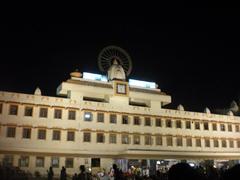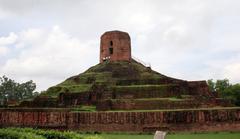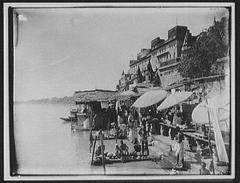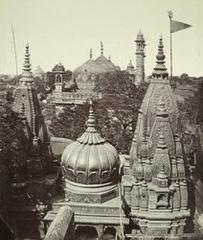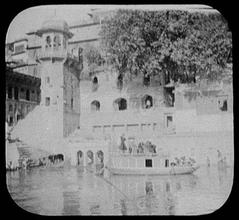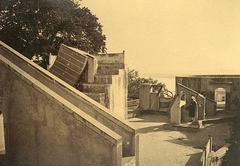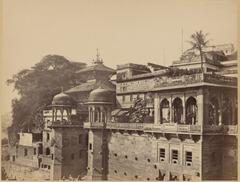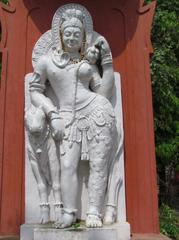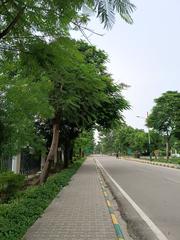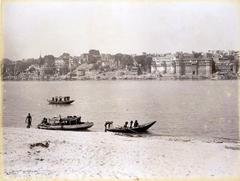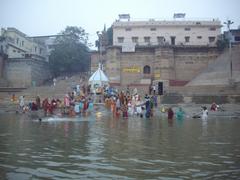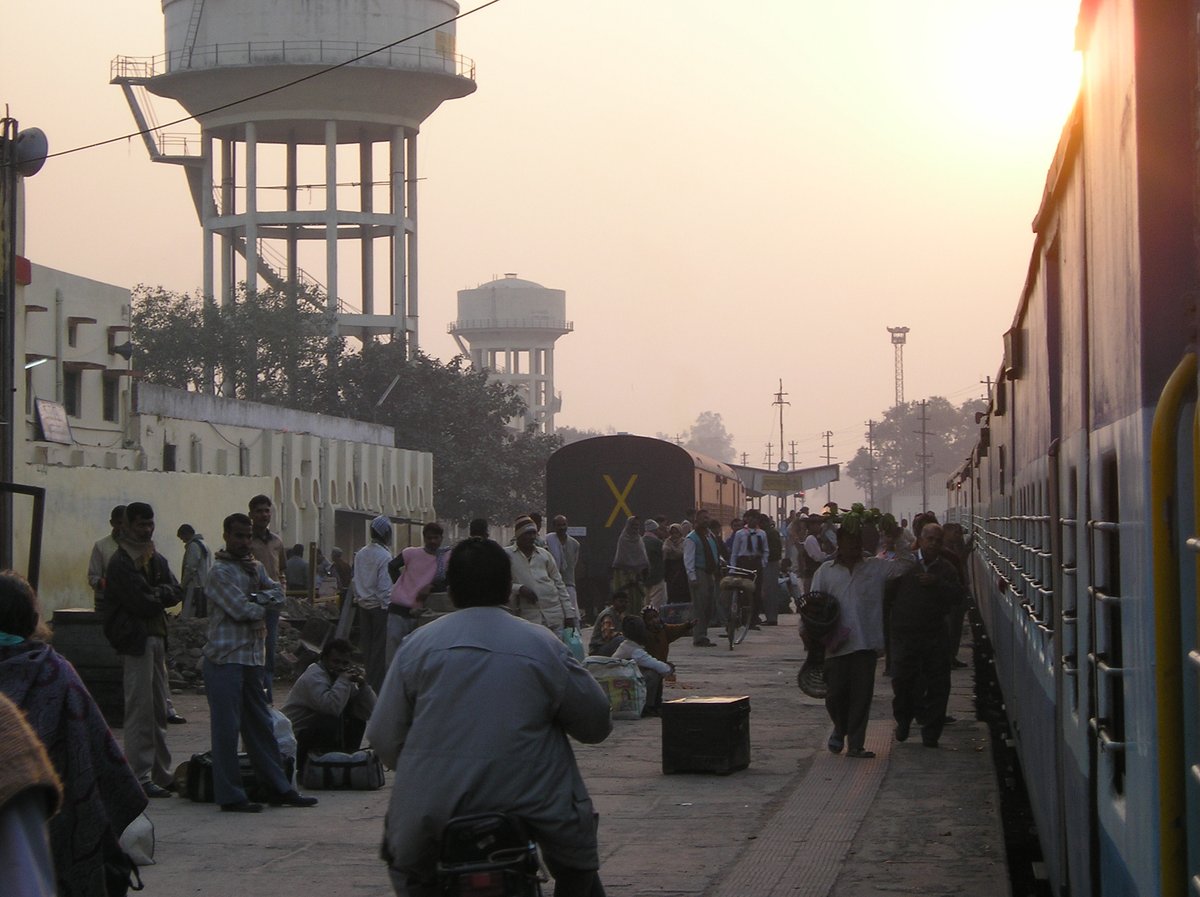
Varanasi Junction Railway Station Visiting Hours, Tickets, and Travel Guide
Date: 14/06/2025
Introduction
Varanasi Junction Railway Station—also known as Varanasi Cantt or Kashi Railway Station—serves as the principal gateway to one of India’s oldest and most spiritually significant cities. Established during the mid-19th century, the station is both a major transportation hub and a cultural landmark, seamlessly blending colonial-era architecture with modern amenities. Strategically positioned near the city’s revered temples and ghats, Varanasi Junction welcomes millions of pilgrims, tourists, and commuters each year, offering them an immersive introduction to Varanasi’s vibrant heritage and spiritual atmosphere.
This detailed guide explores the station’s historical significance, architectural features, visitor information (including visiting hours and ticketing), accessibility, nearby attractions, travel tips, and essential FAQs. Whether you are arriving for a pilgrimage, leisure, or business, this article will help you navigate the station and the city with confidence (varanasipedia.com, banarasdiary.com, erail.in).
Table of Contents
- Origins and Early Development
- Architectural Heritage
- Visiting Hours, Ticketing, and Accessibility
- Station Facilities and Amenities
- Connectivity and Transport Integration
- Nearby Historical Attractions
- Traveler Tips and Safety
- Frequently Asked Questions (FAQ)
- Conclusion and Final Tips
- References
Origins and Early Development
Varanasi Junction traces its roots back to 1862, when it was established as Benares Cantt Railway Station under British colonial rule. This marked the integration of Varanasi into India’s burgeoning railway network, facilitating the movement of people and goods, and catalyzing the city’s growth as a major spiritual and commercial hub (varanasipedia.com).
Architectural Heritage
The station’s design is a blend of colonial and regional influences. The main building features red sandstone, decorative carvings, and sculptures that echo the intricate artistry for which Varanasi is renowned. Platforms are shaded by tin roofs supported by pillars adorned with lotus motifs—a subtle homage to the city’s spiritual traditions. While modern upgrades have enhanced functionality, the station has managed to retain many original aesthetic elements, making it both a practical facility and a living museum of Varanasi’s layered history (varanasipedia.com).
Visiting Hours, Ticketing, and Accessibility
Visiting Hours
Varanasi Junction operates 24/7. Reserved ticket counters are typically open from 8:00 AM to 8:00 PM, and unreserved counters from 6:00 AM to 10:00 PM. Electronic booking via the IRCTC website and mobile app is available round-the-clock. Lounges and waiting rooms have set timings, generally from early morning until late evening.
Ticketing Options
- Advance Booking: Reserve tickets online or at station counters, especially during peak travel seasons and festivals.
- E-Tickets: Book via IRCTC and carry a printout or digital copy along with valid ID.
- Automated Vending Machines: Available on-site for quick transactions.
- On-the-Spot Booking: Possible at station counters, but queues can be long during busy times.
Accessibility Features
- Ramps, tactile flooring, elevators, and escalators connect all platforms.
- Dedicated waiting areas and parking spots for differently-abled travelers.
- Multilingual signage and announcements (Hindi, English, and several regional languages).
- Wheelchair-accessible restrooms and assistance services.
Station Facilities and Amenities
Passenger Comfort
- Executive Lounge: Premium seating, Wi-Fi, buffet meals, showers, and business facilities for a nominal fee (Curly Tales).
- General Waiting Rooms: AC and non-AC options for all ticket classes.
- Restrooms: Modern, clean facilities, including baby care rooms and sanitary vending machines.
Food and Refreshments
- IRCTC cafeterias, branded outlets, and local food stalls.
- Specialty counters for traditional Varanasi snacks like kachori-sabzi and lassi (Zoop India).
Security and Luggage
- 24/7 CCTV, GRP, and RPF patrols.
- Secure left-luggage cloakroom for travelers.
- Baggage scanners and regular security checks, especially during festivals.
Digital and Sustainable Initiatives
- Free Wi-Fi across platforms and waiting areas.
- Real-time digital information boards.
- Solar panels and LED lighting as part of green initiatives.
Connectivity and Transport Integration
Local Transport
- Auto Rickshaws & Taxis: Readily available for short and medium distances.
- App-Based Cabs: Ola and Uber connect the station to hotels, ghats, and the airport.
- Cycle Rickshaws: Eco-friendly transport for short rides.
Regional and National Links
- Nearby Stations: Manduadih (MUV), Banaras (BSBS), and Deen Dayal Upadhyaya/Mughal Sarai Junction (MGS) offer additional connectivity (tripsavvy.com).
- Airport: Lal Bahadur Shastri International Airport is 22–26 km away.
- Bus Terminals: Main city and Rathyatra bus stations are within 1–4 km.
Nearby Historical Attractions
Strategically located, Varanasi Junction is an ideal starting point for exploring:
- Kashi Vishwanath Temple: The city’s most revered Hindu shrine, about 5 km from the station.
- Dashashwamedh Ghat: The main ghat, renowned for its evening Ganga Aarti and spiritual ambiance.
- Sarnath: An important Buddhist pilgrimage site, around 10 km away.
- Ramnagar Fort: On the eastern bank of the Ganges, accessible by a short taxi ride.
Traveler Tips and Safety
- Arrive Early: Especially during festivals and peak seasons, allow at least 45–60 minutes for check-in and navigation.
- Stay Hydrated and Eat Safe: Use water kiosks and opt for packaged food if sensitive to local cuisine.
- Luggage Security: Use official cloakroom services and avoid leaving belongings unattended.
- Respect Local Customs: Dress modestly and seek permission before photographing religious activities or groups.
- Emergency Support: Note helpline 1322 for security complaints and use on-site medical services if needed.
Frequently Asked Questions (FAQ)
Q: What are the visiting hours of Varanasi Junction?
A: The station operates 24/7. Ticket counters usually run from 6:00/8:00 AM to 10:00/8:00 PM, depending on the counter type.
Q: How can I book tickets for trains at Varanasi Junction?
A: Book online via IRCTC, at station counters, or through automated vending machines.
Q: Is the station accessible for differently-abled travelers?
A: Yes, with ramps, lifts, tactile pathways, and accessible restrooms.
Q: What are the main nearby attractions?
A: Kashi Vishwanath Temple, Dashashwamedh Ghat, Sarnath, and Ramnagar Fort.
Q: Are there secure luggage storage options?
A: Yes, the cloakroom is available for valid ticket holders.
Q: Is Wi-Fi available at the station?
A: Yes, free Wi-Fi is accessible throughout the premises.
Conclusion and Final Tips
Varanasi Junction Railway Station is more than a transit hub; it is a dynamic intersection of history, spirituality, and modern progress. Its comprehensive facilities, strategic location, and commitment to passenger comfort make it an indispensable part of the Varanasi experience. Whether you are a pilgrim, tourist, or daily commuter, understanding the station’s services, nearby attractions, and travel protocols will ensure a smooth and enriching visit.
For real-time train updates, travel tips, and exclusive guides, download the Audiala app and follow our social channels. Plan ahead, arrive early, and immerse yourself in the unique spiritual atmosphere that only Varanasi can offer.
References
- Varanasipedia: Varanasi Junction Overview
- Banaras Diary: Gateway to the Holy City
- eRail.in: Varanasi Railway Station Information
- Wikipedia: Varanasi Junction Railway Station
- Curly Tales: Executive Lounge at Varanasi Junction
- Zoop India: Varanasi Junction Food Guide
- Pilgrims India: Varanasi Junction as Spiritual Gateway
- The Travel Shots: Varanasi Junction Overview
- Famous Varanasi: Facilities and Amenities
- Varanasi Guru: Railway Station Guide
- Banaras Trip: Local Etiquette and Ghats

